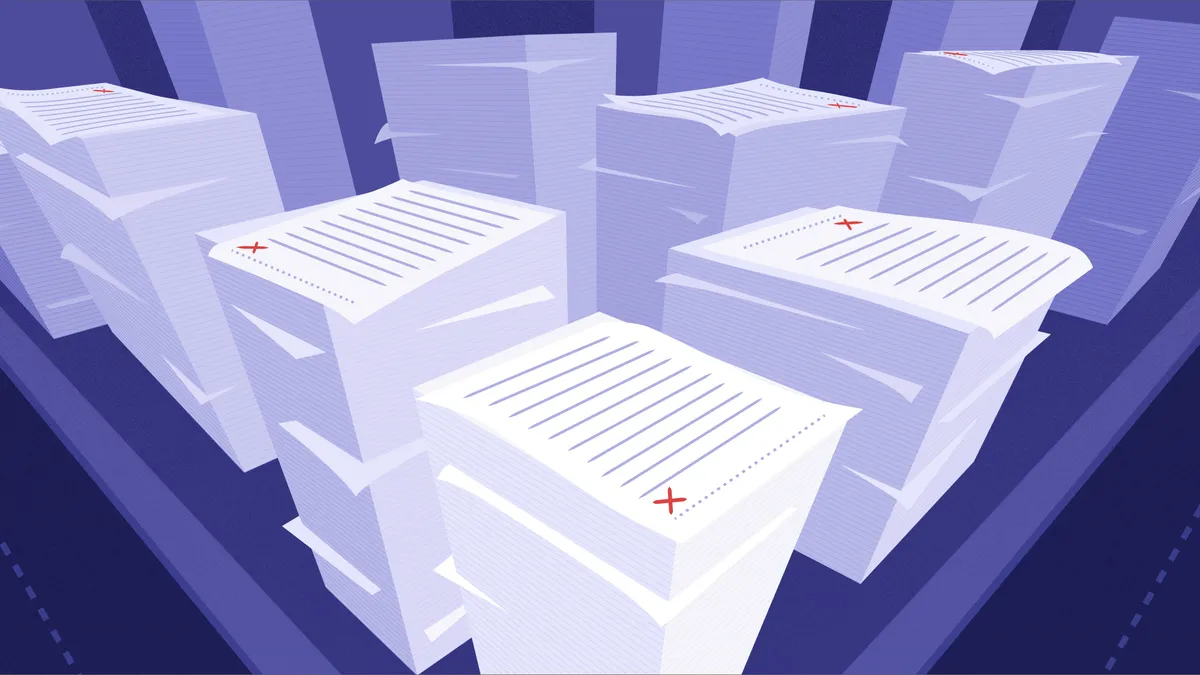The Dotted Line: Legal trends to watch in 2024
Contracts are evolving in an era of persisting supply chain problems, inflation and cyber risks, construction attorneys say.

This feature is a part of “The Dotted Line” series, which takes an in-depth look at the complex legal landscape of the construction industry. To view the entire series, click here.
As 2024 begins, construction pros are facing continued inflation, supply chain issues, burgeoning cyber threats and project delays.
While these stress tests can spark conflict, builders (and their lawyers) are also finding creative ways to share the risk and adapt to this environment.
The legal world is also shifting rapidly, from new federal funding mandates to Supreme Court rulings to state-level indemnity clauses. Here are some of the top issues that construction legal experts are watching this year.
Supply chain snarls, inflation will continue to lead to legal disputes
While COVID-19 is no longer upending supply chains like it did early on, its impacts continue to ripple through the industry. Materials disruptions seem here to stay for now amid issues like geopolitical tensions and climate change, and builders are planning accordingly.

One way contractors are dealing with this uncertainty is through material escalation clauses, said James Gallagher, principal with Marlton, New Jersey-based Resolution Management Consultants, which provides dispute resolution and project management services to the construction industry.
“It’s a matter of how much risk is the contractor taking on, and then how much can they recover if something comes up?” said Gallagher.
Higher prices will bring more lawsuits
As inflation and other factors continue to drive up project costs, contractors and owners are jockeying with each other to distribute risk, according to Norton Rose Fulbright’s 2024 Annual Litigation Trends survey.
“That price escalation [is] causing owners to be more strict with their change order provisions,” said Tim Walsh, head of construction at global law firm Norton Rose Fulbright U.S. The end result is owners putting more effort into enforcing those provisions to stick with the original pricing, he added.

One of the key aspects of supply chain challenges now is inflation, according to Gallagher. Contractors try to estimate the cost of materials months down the line, but it could end up being much higher or lower than they planned, which may lead to disputes.
“There are different times when different materials for different reasons become short, and therefore more costly,” said Gallagher. “That’s why then, especially architects, engineers, will look at alternative types of products to maybe implement in a project if certain costs escalate on one type of material versus others.”
More cases will go to arbitration
Other forces are at play, too. COVID-19 shut down much of the U.S. court system for about a year, which created a backlog in many jurisdictions. Gallagher is seeing more clients turn to arbitration instead of waiting — in some cases, for years — as their case winds through the courts.
“I think it’s put a little bit stronger of an emphasis on the alternative type of litigation systems such as mediation and arbitration,” said Gallagher. The benefit there, he said, is that parties actually work to truly resolve the dispute, rather than just going through the motions in court.
Affirmative action ruling will create uncertainty
Last year’s Supreme Court ruling that struck down race-conscious college admissions will likely have wide-ranging ramifications, from classrooms to jobsites. In recent months, companies have been re-examining diversity, equity and inclusion initiatives amid unclear guidance around what is legal or not.
For now, much of the ruling’s implications remain undefined, which means government workers are doing their best to interpret what it means, said Jennifer Flickinger, government contracts group partner at HKA Global, a construction risk management consultancy.
“Any time you leave something up to the interpretation of an individual, you can get very different results out of the same government agency but different people. And because it’s not defined right now, I think that’s what’s causing that stress or tension,” said Flickinger.

For construction, this also affects minority and disadvantaged business designations, which have come under fire via a handful of lawsuits challenging their constitutionality. Before, a contractor could say that they were a disadvantaged business based simply on race, for example, and that’s not the case anymore, she said. Flickinger has seen new applicants that have been denied the MWBE status because they didn’t meet the financial specifications, but hasn’t seen a business lose the designation yet. Still, the full ramifications of the ruling remain to be tested.
“I think where you’ll actually see some of this play out is in bid protests, where a contractor may have some contract awarded to them and another contractor comes behind and says, ‘But they’re not really disadvantaged,” Flickinger said.
AI, other digital tools will bring new risk
Construction will always remain fundamentally physical, but as more and more aspects of projects go digital, cybersecurity and data protection have become a major dispute area for organizations, Norton Rose Fulbright’s survey found.
For instance, artificial intelligence is a leading contributor to both cybersecurity exposure, according to the survey. The technology’s full legal risks and ramifications are not yet clear because AI-related claims haven’t really entered the legal system yet, Gallagher said.
Builders must ensure that they’re not stumbling into legal peril through data mismanagement. Construction software programs have varying contracts and license agreements, for example. These tools can involve sharing data with the third-party owner of that software, as well as with contractors and subcontractors who are accessing that software platform in order to upload change orders, lien waivers and other project documents.
“The more and more we move toward using AI tools, contractors and owners should absolutely be thinking about incorporating into their contracts some type of provision that talks about the safety and security of the electronic data that’s shared at all times between project participants,” said Walsh.
____________________________________________________________
The Dotted Line series is brought to you by AIA Contract Documents®, a recognized leader in design and construction contracts. To learn more about their 200+ contracts, and to access free resources, visit their website here. AIA Contract Documents has no influence over Construction Dive’s coverage within the articles, and content does not reflect the views or opinions of The American Institute of Architects, AIA Contract Documents or its employees.
Recommended Reading
- The Dotted Line: Change orders often spark conflict, but they don’t have to By Julie Strupp • Nov. 28, 2023
- The Dotted Line: Why the Amazon noose lawsuit is ‘a big deal’ By Joe Bousquin • Oct. 31, 2023
